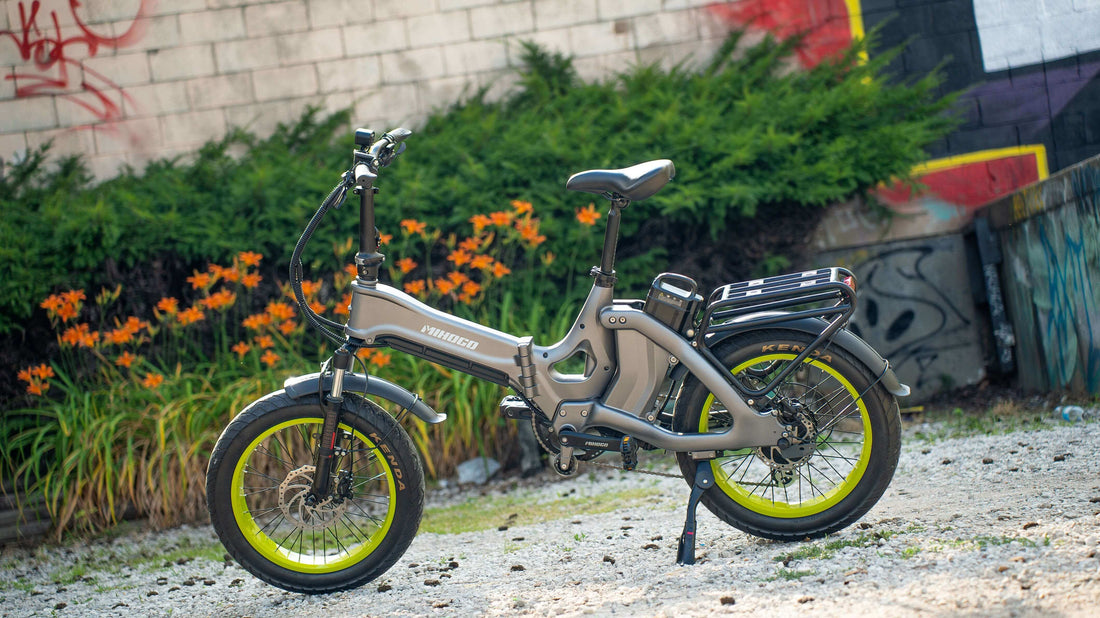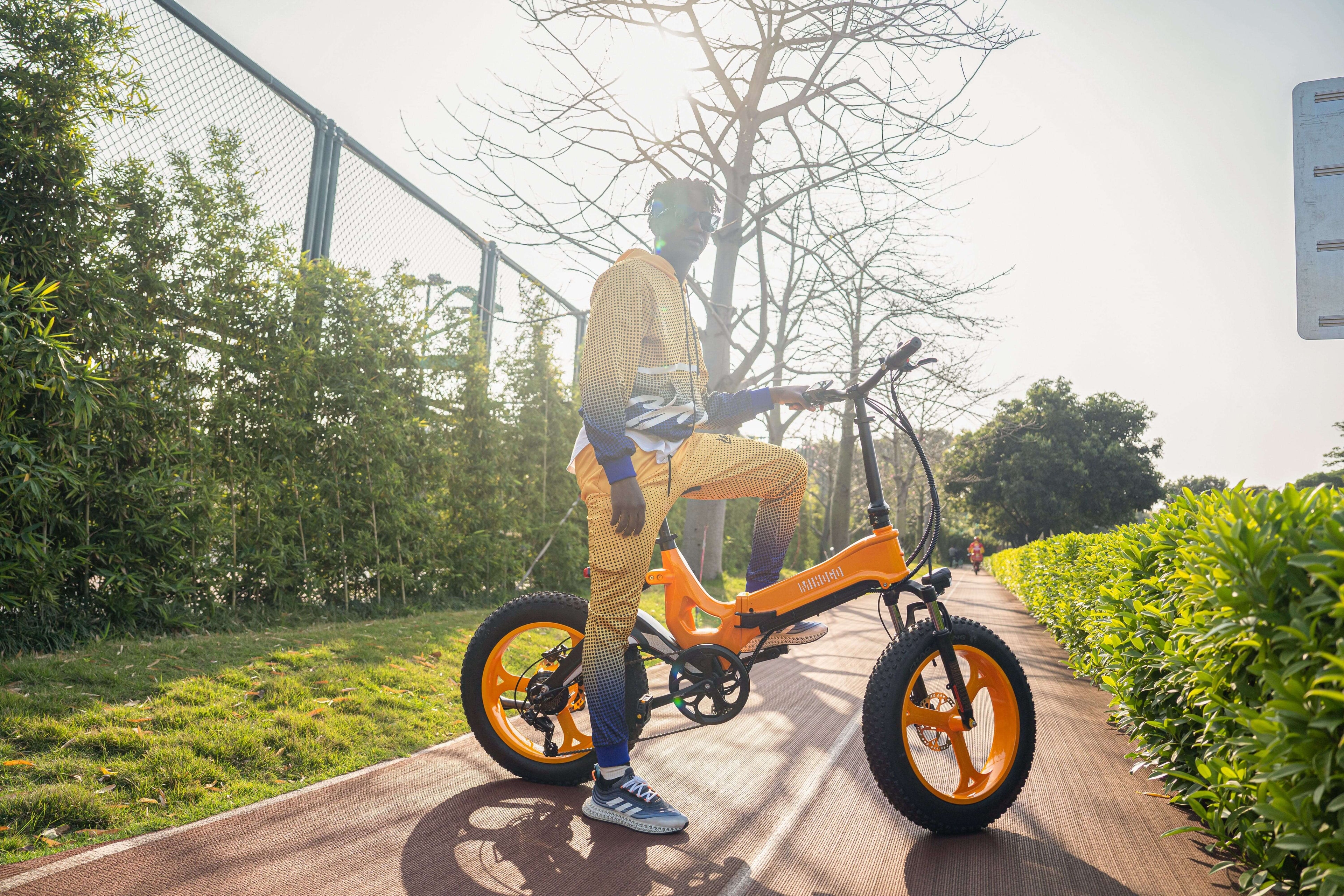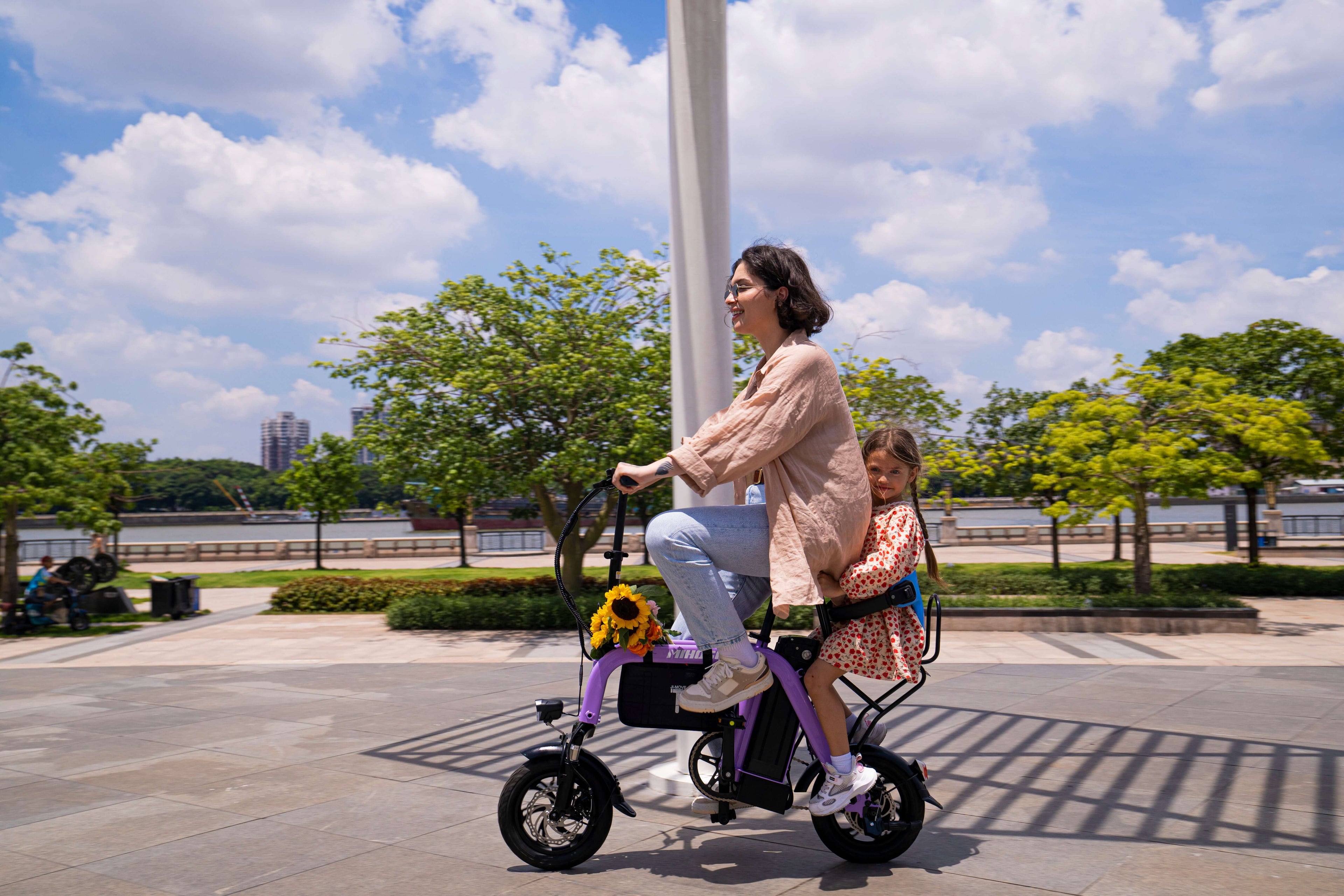Whether you're riding the powerful Mihogo Air750 Max with its impressive 121-mile range through mountain trails, tackling utility tasks with the versatile Mihogo ONE Utility EBIKE, navigating compact spaces with the Mihogo RX 2.4 folding commuter, or exploring local paths on the agile Mihogo Mini, safety must always be your top priority in remote settings.
Understanding Remote E-Bike Adventure Risks
Remote e-bike adventures present unique challenges that differ significantly from urban riding. Between 2017 and 2021, injuries and fatalities involving e-bikes have been steadily rising, making proper safety preparation even more critical for backcountry exploration.
Key Remote Riding Hazards
Terrain Challenges: Rocky paths, steep descents, loose gravel, and unpredictable weather conditions can quickly turn an exciting adventure into a dangerous situation. Your Mihogo e-bike's powerful motor system provides excellent assistance, but understanding your limits remains crucial.
Isolation Factors: Cell service blackouts, limited rescue access, and extended distances from medical facilities mean that small mistakes can have serious consequences. Cell service is unreliable in remote areas, and GPS units with preloaded maps ensure navigation continuity.
Battery and Technical Risks: Running out of power in remote locations or experiencing mechanical failures far from bike shops requires advanced planning and self-sufficiency skills.
Pre-Adventure Safety Planning
Bike Inspection and Maintenance
Before embarking on any remote adventure with your Mihogo e-bike, conduct a comprehensive safety inspection:
Motor and Battery Check: Ensure your Mihogo's motor system (whether 350W on the Mini, 500W on the RX 2.4, or 750W on the Air750 Max and ONE Utility) is functioning optimally. Starting in 2023, NYC mandated UL certification for all e-bike batteries to combat rising fire incidents - always verify your battery health and charging system integrity.
Brake Performance: Test both front and rear brakes thoroughly. Remote terrain demands reliable stopping power, especially on steep descents where your e-bike's speed can quickly exceed safe limits.
Tire Condition: Inspect tires for wear, proper inflation, and adequate tread depth. Consider the terrain you'll encounter - your Mihogo's tire specifications should match your planned route difficulty.
Route Planning and Risk Assessment
Digital Preparation: Download offline maps and GPS coordinates before departing. GPS mapping systems now include detailed trail data for remote areas, but cellular connectivity cannot be guaranteed in wilderness areas.
Weather Analysis: Check extended forecasts and seasonal conditions. Mountain weather can change rapidly, and your e-bike's electronic components require protection from extreme conditions.
Emergency Communication: Establish check-in protocols with family or friends. Consider satellite communication devices for truly remote adventures where cell service is unavailable.
Essential Safety Gear for Remote E-Bike Adventures
Personal Protection Equipment
Advanced Helmet Systems: Choose helmets specifically designed for e-bike speeds. New models now feature built-in GPS and navigation for seamless route planning and some include integrated communication systems for group rides.
Protective Clothing: Layer appropriate gear including moisture-wicking base layers, protective padding for knees and elbows, and weather-resistant outer shells. Your Mihogo's comfortable riding position reduces fatigue, but protection remains essential.
Visibility Enhancement: LED lighting systems, reflective clothing, and high-visibility colors become critical in remote areas where rescue operations may be limited to daylight hours.
Technical Equipment and Tools
Repair Kit Essentials: Carry tire repair supplies, basic tools, spare brake pads, and chain maintenance equipment. Your Mihogo's reliability is excellent, but mechanical preparation prevents minor issues from becoming major problems.
Power Management: Solar charging transforms your e-bike from a limited-range vehicle into an unlimited exploration machine. Consider portable solar panels for extended adventures, especially when using power-hungry models like the Air750 Max.
Navigation Backup: GPS devices with extended battery life, paper maps, and compass provide redundancy when electronic systems fail.
Battery Safety and Power Management
Optimizing Your Mihogo's Range
Understanding your specific Mihogo model's capabilities helps plan safe adventures:
- Air750 Max: 121-mile range supports extended backcountry exploration
- ONE Utility EBIKE: 167-mile range ideal for multi-day adventures with gear
- RX 2.4: 40-mile range perfect for day trips and local exploration
- Mini: 62-mile range suitable for moderate distance adventures
Remote Charging Strategies
Solar Integration: In midday summer sun, users report getting nearly 80-85 watts from similar dual 50W panel setups, making solar charging practical for extended remote trips.
Battery Conservation: Use lower assist levels in safe terrain, maintain steady speeds, and avoid excessive acceleration to maximize your Mihogo's range.
Emergency Power Planning: Always maintain 25% battery reserve for unexpected situations or route changes.
Safe Riding Techniques for Remote Terrain
Speed and Control Management
Descent Safety: Steep downhill descents can push speeds beyond safe levels, making it hard to stop quickly. Your Mihogo's powerful motor can assist with controlled descents, but proper braking technique remains essential.
Climb Optimization: Utilize your e-bike's power assistance efficiently. The 750W motors on Mihogo's Air750 Max and ONE Utility models provide excellent hill-climbing capability, but maintaining proper body position and gear selection improves safety and efficiency.
Trail Awareness: Strong frames, powerful brakes, and shock absorbers work together to create a smooth experience on rough ground. Your Mihogo's design handles challenging terrain, but rider awareness prevents accidents.
Group Riding Safety
Communication Protocols: Establish hand signals, radio procedures, and emergency plans before departing. Group riding safety requires coordination and clear communication.
Spacing and Formation: Maintain safe following distances, especially on technical terrain where your e-bike's speed capabilities exceed traditional mountain bikes.
Skill Level Matching: Ensure all riders' abilities match the planned route difficulty. Your Mihogo's assist levels can help balance group capabilities, but fundamental skills remain crucial.
Emergency Preparedness and Response
Self-Rescue Capabilities
First Aid Training: Remote adventures require advanced first aid knowledge. Minor injuries become serious when professional medical help is hours away.
Mechanical Problem-Solving: Learn basic e-bike troubleshooting specific to your Mihogo model. Understanding your bike's electronic systems enables field repairs and safe riding with reduced functionality.
Weather Emergency Response: Know how to protect yourself and your e-bike from sudden weather changes. Electronic components require specific protection from moisture and extreme temperatures.
Emergency Communication
Satellite Technology: Battery Life: 28 days in 10-minute tracking mode with clear sky view makes modern satellite communicators reliable for extended adventures.
Location Sharing: GPS coordinate sharing capabilities ensure rescue teams can locate you precisely, even in remote wilderness areas.
Emergency Protocols: Establish clear procedures for various emergency scenarios, including mechanical failures, medical emergencies, and severe weather.
Technology Integration for Enhanced Safety
Smart Safety Features
Built-in GPS and navigation for seamless route planning. App connectivity to monitor battery life, motor performance, and ride analytics are becoming standard features that enhance remote adventure safety.
Real-Time Monitoring: Track your Mihogo's performance, battery status, and route progress through connected applications.
Predictive Maintenance: Modern e-bike systems can alert you to potential issues before they become dangerous in remote settings.
Advanced Safety Systems
Anti-Theft Protection: In 2025, we'll see a new wave of electric bike anti-theft systems, including fingerprint-based locks, which provide security during remote camping or exploration stops.
Vehicle Communication: Some models even have the capability of Vehicle Vehicle (V2V) communication, which allows e-bikes to communicate with cars nearby, enhancing safety when remote trails intersect with vehicle traffic.
Seasonal Considerations for Remote E-Bike Adventures
Winter Safety Adaptations
Cold weather significantly impacts battery performance and requires specialized preparation. Your Mihogo's battery system needs protection from extreme temperatures to maintain reliable performance.
Battery Management: Cold temperatures can reduce range by up to 40%. Plan accordingly and consider battery warmers for extreme conditions.
Traction and Control: Winter trail conditions demand different riding techniques and potentially specialized tires for your Mihogo model.
Summer Heat Management
Thermal Protection: Protect your e-bike's electronic components from extreme heat. Battery overheating can cause dangerous failures in remote locations.
Hydration and Heat Safety: Plan water sources and heat emergency procedures. Remote adventures in summer heat require extensive preparation.
Building Your Remote Adventure Skills
Progressive Skill Development
Start with shorter, less remote adventures to build confidence and skills with your specific Mihogo model. Understanding your bike's capabilities and limitations in controlled settings prepares you for more challenging expeditions.
E-bike riding techniques vary significantly from traditional cycling, especially in challenging terrain.
Battery optimization strategies become crucial for extended remote adventures.
Emergency repair procedures specific to e-bike systems can prevent dangerous situations in remote settings.
Training and Certification
Consider formal e-bike safety courses and wilderness first aid training. Off road ebikes need both power and safety features to handle rough trails, but rider skills remain the most important safety factor.
Conclusion: Adventure Safely with Confidence
Remote e-bike adventures with your Mihogo open incredible opportunities for exploration and discovery. The combination of reliable technology, proper safety preparation, and developed skills creates the foundation for safe, enjoyable adventures in even the most remote locations.
Your Mihogo e-bike provides the power, range, and reliability needed for backcountry exploration, but safety ultimately depends on thorough preparation, appropriate gear, and responsible decision-making. Whether you're pushing the limits with the long-range Air750 Max or exploring local trails with the compact Mini, these safety principles ensure every adventure ends safely.
The growing e-bike community continues developing new safety technologies and techniques. E-bikes are no longer just about getting around. Expect models designed for specific needs like commuting, carrying cargo, and off-road adventure. As this evolution continues, staying informed about safety developments and continuously improving your skills ensures you can enjoy remote e-bike adventures for years to come.
Plan thoroughly, ride responsibly, and let your Mihogo e-bike unlock the incredible world of remote adventure that awaits just beyond the pavement.








